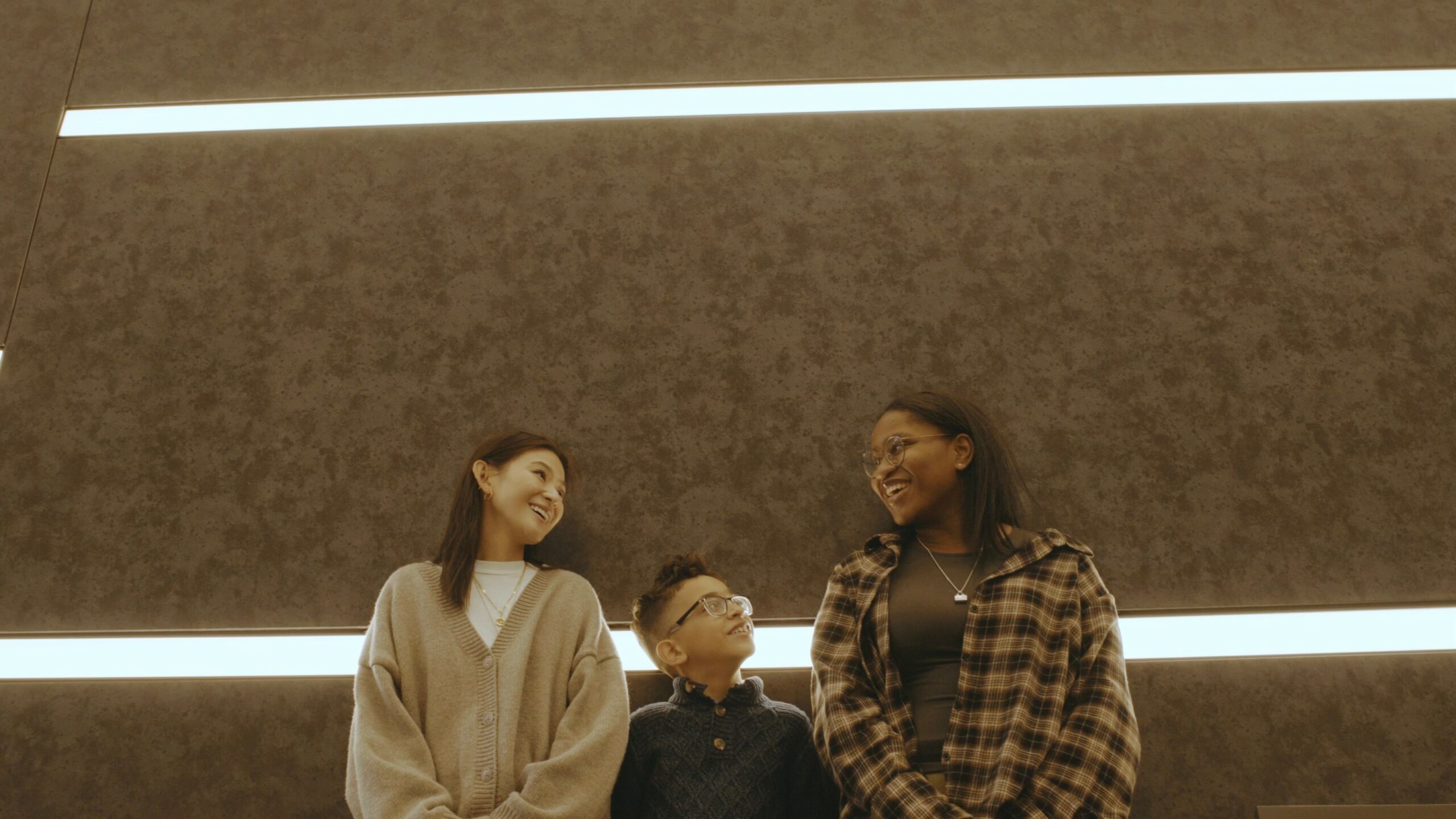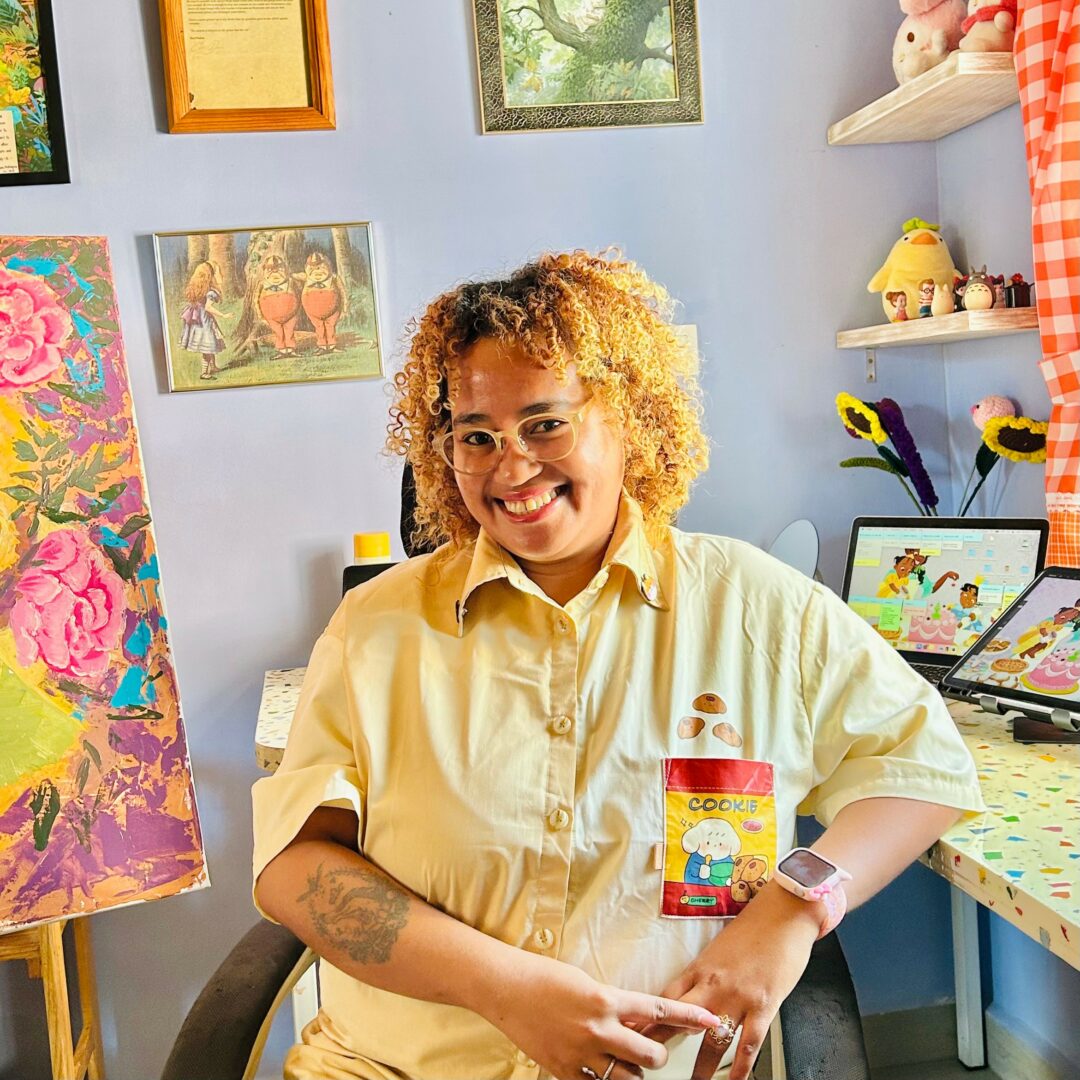We’re excited to introduce you to the always interesting and insightful Aidan Sank. We hope you’ll enjoy our conversation with Aidan below.
Aidan, thank you so much for making time for us today. We can’t wait to dive into your story and the lessons you’ve learned along the way, but maybe we can start with something foundational to your success. How have you gone about developing your ability to communicate effectively?
You can draw a straight line between my time spent working with the stuttering community, and my skills as a strong, empathetic communicator. As a nonprofit leader working with people who stutter for over a decade, both my communication style and abilities have been impacted enormously by my interactions with stutterers. To explain, let’s start by actually dismantling the idea of what it means to communicate effectively.
Societally, we place great importance on “efficient” communication, ie. speech that is quick and smooth sounding, with fluent articulation. We amplify the voices of those who meet this criteria, and diminish the voices of those who don’t.
But efficient communication doesn’t actually mean *effective* communication. In fact, you can speak as quickly, smoothly and fluently as you like, but if you aren’t choosing your words intelligently, if you don’t listen to your conversation partner, if you aren’t speaking with persuasive reasoning or structuring your ideas clearly, you actually aren’t communicating well at all. There’s a strong argument to be made that an increase in speed of communication actually has no correlation to the clarity of communication itself. This is something I learned from spending time in the stuttering community, as a non-stutterer myself.
Stuttering is a neurological speech difference affecting 1% of the population. The physical symptoms of stuttering manifest as soundless blocks, repetitions of words or syllables and prolongations of sounds. It is a disability without a cure (though some will naturally grow out of it), and many who stutter feel pressure to hide the way that they speak, due to societal stigma and arbitrary standards of what communication “should” look like.
I first came into contact with the stuttering community as a volunteer teaching artist, helping to create theater with young people who stutter at a local nonprofit. On my first day, I was paired with a middle-schooler to help facilitate the creation and performance of an original play.
I asked him if he’d had any experience with acting before, and he told me that he didn’t, but that he’d always wanted to try it. In fact, he said, he’d wanted to audition for the school play that year, but a teacher had told him there was no way for him to have a speaking role, since he’d likely stutter through his lines, and so he had dropped out of contention for it. It was clear how much this moment with his teacher had impacted him.
We quickly jumped into our first exercise, having him improvise a scene of his imagining. He chose a scenario in which a young man was standing up to the bullies that had been tormenting him over the last year – based loosely on his own experiences. In the fluorescent lit, wood-floored studio, I watched this young man deliver a truly moving and dynamic monologue on the spot. As an actor, he was funny and clever and dramatic and flamboyant and just legitimately…great. And through the whole monologue – he stuttered. In fact, he stuttered a lot. He took long pauses, he repeated words, he blocked silently. And though it made his speech a little longer overall, it was no less funny, no less moving, no less dynamic. I even found myself leaning in just a little bit more to make sure that I didn’t miss anything he was saying. The stutter wasn’t an impediment to him communicating – it just made his words sound a little different than they would have if another kid had spoken them.
Over the next decade engaging with the stuttering community, what I learned is: despite what society tells us, a person speaking with a disfluency isn’t communicating poorly, they’re communicating *differently*. During this time, I’ve met project managers, lawyers, actors, doctors, counselors, executives, even a rocket scientist – all of whom stutter openly. Despite the societal pressure they faced, they didn’t hide their authentic voices or assimilate their speech towards a more fluent norm. Instead, they boldly believed – and rightly so – that if they took up the space they needed, more often than not people would listen to what they had to say. They knew that they were smart, eloquent, vulnerable, and genuine, and that they deserved to take the time needed to communicate their way.
So for me, who entered into this community at age 19 as an *efficient* communicator, all speed and smoothness, I began to slow down. I learned to choose more carefully when my voice needed to be heard and when I could leave space for others instead. I started to value listening to *what* was being said, not *how* it was being said. I learned to more effectively grasp what my conversation partner was saying, and in turn, more effectively respond. I began to deepen my understanding of how to tell beautiful stories, after hearing so many beautiful stories told to me.
Now, as the Executive Director and co-Founder of SPACE, a nonprofit for people who stutter, I am grateful every day for this community. Thanks to people who stutter, I am a proud ally, and an effective communicator. When we embrace differences in communication, and not mistake efficiency for effectiveness, we can all become stronger communicators and forge deeper connections.
Thanks, so before we move on maybe you can share a bit more about yourself?
I am the co-Founder and Executive Director of SPACE and it is my job to advocate for people who stutter, and to help to change the way the world listens! I’m originally from Vancouver Canada, though I’ve spent the last 15 years living in New York City, having moved here originally to pursue a career in acting. Now, after over a decade of experience in arts education and stuttering advocacy, I spend the majority of my time collaborating with extraordinary young people and adults who stutter, designing innovative programming and building partnerships to create change.
Ultimately, we started SPACE because we identified that there isn’t enough space being created right now for people who stutter. We quickly recognized that when we improve conditions for those who stutter, we improve conditions for everyone. With this in mind, we designed an organization that both creates space for stuttering, while seeking to shift the way that society listens as whole. We strongly believe that everyone benefits when we learn how to truly listen to one another and celebrate people’s authentic voices.
As you may or may not know, people who stutter make up 1% of the population, or about 79 million people world wide. There is no cure for stuttering and people who stutter feel significant pressure to hide the way they speak. This is mostly due to societal stigma, discrimination, and a lack of public understanding of stuttering. People who stutter are often unfairly denied expressive or highly verbal opportunities, due to misconceptions around stuttered speech as a “lesser” form of communication. For many people who stutter, it is a defining trait that will be with them for their entire lives. It’s a highly misunderstood, often invisible disability, that deserves much more attention than it generally receives.
Right now, SPACE is doing some exciting things, including creating innovative advocacy films. You can find our most recent offering “The SPACE Between my Words” on our homepage at spacetostutter.org
There is so much advice out there about all the different skills and qualities folks need to develop in order to succeed in today’s highly competitive environment and often it can feel overwhelming. So, if we had to break it down to just the three that matter most, which three skills or qualities would you focus on?
1) Make sure your “why” is incredibly clear
As a leader, you will be tasked with pitching your idea to others over and over again. You will be asked to justify the need for your product/organization/business in a hundred different ways. You will take significant risks based solely on your own belief in your vision. If you do not have a deep, unwavering sense of *why* what you’re doing is so important, it will be nearly impossible to accomplish your goals. If you are not 100% sure why you are doing what you’re doing, the folks you are asking to follow you on your journey won’t be sure either. The “why” is the thing that will drive you – it will dictate the creative and business decisions you make, it will let you prioritize what to pursue and what to let go of. Most importantly, the why will carry you through the uncertainty. When you are up at 4am, agonizing over whether or not this was a good idea in the first place, that strong and immovable why will help lull you back to sleep. If you know why what you’re doing is so important, you have the most important ingredient in place.
2) Reach out to your community
In business, independence is overrated. The idea of an entrepreneur forging ahead alone is outdated and inaccurate. In my view, the only way to find success is through collaboration and community building. In the process of launching a nonprofit, I have found time and time again that all of the best parts of this journey have come from connections I’ve built with folks, and the ways we’ve been able to help each other out. If your mission and vision is strong, and you can communicate the excitement you have about it, more likely than not folks will be down to pitch in. Despite how it may seem sometimes, the world is actually filled with a lot of very generous people, if you are brave enough to ask for the help you need.
3) Get comfortable with uncertainty
Despite your best laid plans – things aren’t always going to go the way you want them to. It is impossible to predict the way that things will develop and how the big picture all comes together. The things you feel 100% sure of right now will likely ebb and flow as your journey progresses. This can be an incredibly uncomfortable spot to be in… if you fight the feeling. As corny as perhaps it sounds, you have to embrace the shifting nature of your entrepreneurial journey. Once you let go of the need to control the way you get to your destination (or even what that exact destination looks like!), it frees you up to be agile, flexible, and responsible in your approach.
Okay, so before we go we always love to ask if you are looking for folks to partner or collaborate with?
SPACE values collaboration as one of the central pillars of our identity. We strongly believe that we are more effective when we work together, and that coalition building is the path to real progress.
We are always looking to collect with the following folks:
1) People who stutter from any background, though we especially love meeting artists and professionals who stutter.
2) People who are interested in advocating for better listening, and for marginalized communities to be heard.
3) Stuttering allies passionate about our cause.
3) People who aligned with our values of listening, collaboration, advocacy and IDEA (Inclusion, Diversity, Equity, Access) and would like to volunteer their time with a progressive, innovative nonprofit.
To connect, either visit our website spacetostutter.org or email me directly at [email protected]
Contact Info:
- Website: spacetostutter.org
- Instagram: https://www.instagram.com/spacetostutter/
- Facebook: https://www.instagram.com/spacetostutter/
- Linkedin: https://www.facebook.com/spacetostutter/
- Other: Vimeo: https://vimeo.com/spacetostutter





Image Credits
Jonathas Nazareth




